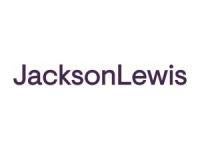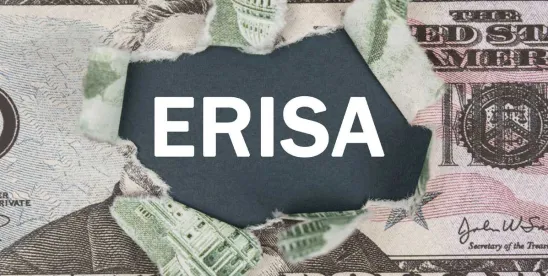Introduction
On August 7, 2025, President Donald J. Trump issued an Executive Order designed to broaden access to alternative investments, such as private equity, commodities, real estate, and certain digital assets, for participants in 401(k) and other defined contribution retirement plans. The initiative is framed as an effort to “democratize” investment opportunities that were historically limited to institutional and high-net-worth investors.
While the headlines emphasize new investment possibilities, ERISA fiduciaries must proceed with caution. The Executive Order sets policy direction, but it does not alter fiduciary obligations under ERISA. Moreover, in light of recent Supreme Court precedent, fiduciaries should reexamine how much reliance they can place on agency guidance and regulations when making decisions about designated plan investment options.
What This Means for Fiduciaries of ERISA-Covered Plans
1. A Green Light to Explore
The Executive Order directs the Department of Labor (DOL) and the Securities and Exchange Commission (SEC) to revisit existing rules and guidance. Future action may clarify how alternative assets may be offered in defined contribution plans and whether new safe harbors will be created. Until then, ERISA fiduciary duties of prudence, loyalty, and diversification remain unchanged.
2. New Opportunities, Greater Risks
Alternative investments may offer enhanced diversification and the potential for stronger long-term returns. At the same time, they present significant challenges: higher fees, illiquidity, valuation challenges, reduced transparency, reduced oversight, and in many cases greater volatility. Fiduciaries considering these options must demonstrate a prudent, well-documented process showing the decision serves participants’ best interests.
3. More Moving Parts, More Diligence Required
Unlike publicly traded mutual funds or index funds, many alternative assets do not price daily and may impose withdrawal or transfer restrictions. Fiduciaries must coordinate with recordkeepers, custodians, and investment professionals to assess operational feasibility before offering such options under a plan.
The Loper Bright Factor: Reliance on Future Regulations
In June 2024, the U.S. Supreme Court’s decision in Loper Bright Enterprises v. Raimondo overturned the longstanding Chevron deference doctrine, which had required courts to defer to reasonable agency interpretations of ambiguous statutes.
This shift means that even if the DOL issues a safe harbor for alternative assets, courts may ultimately determine that such rules exceed statutory authority. Fiduciaries cannot rely solely on agency guidance to shield decisions from challenge—they must independently ensure that all actions align with ERISA’s statutory text and fiduciary standards.
Next Steps for Plan Fiduciaries
Conduct a Forward-Looking Assessment
Fiduciaries should evaluate how alternatives would perform under varying market conditions, how higher expenses could affect total returns, and whether the additional complexity provides sufficient value compared to simpler, lower-cost options. Fiduciaries also should consider whether their plan demographics, including participant withdrawal norms and the investment sophistication of their participants, should influence the decision.
Analyze the Most Prudent Offering Structure
For many plans, offering alternatives through a diversified, professionally managed vehicle—such as a collective investment trust—may be more prudent than providing participants direct access through a brokerage window. Managed structures can help control allocations and mitigate risk.
Develop a Participant Education Strategy
If alternatives are offered, participants will need clear, accessible explanations of both benefits and risks. Fiduciaries should consider:
- Examples illustrating how alternatives differ from traditional asset classes.
- Educational materials tailored to participants unfamiliar with illiquid or complex products.
- Enhancements to managed account programs to better integrate new investment classes.
Anticipate the Regulatory Curve
The DOL and SEC are expected to issue further guidance and potentially safe harbor provisions in the months ahead. Subject to the caveat raised by Loper Bright, fiduciaries should be ready to act promptly once rules are finalized. This may include amending investment policy statements, revising service provider contracts, or updating plan documents.
Action Steps for Fiduciaries
Immediate Steps
- Monitor the rulemaking process and related litigation.
- Begin preliminary due diligence on potential alternative investments.
- Review governance documents to confirm they support new investment structures.
- Evaluate what impact, if any, alternative investments would have on fiduciary insurance policies, plan audits, and Form 5500 reporting.
- Determine whether responsibility for evaluating alternative investments should be delegated to an ERISA Section 3(38) investment manager – an investment fiduciary who assumes responsibility for investment decisions.
Upon Issuance of Guidance
- Update the investment policy statement to include criteria for evaluating and monitoring alternatives.
- Document each step of the decision-making process, with an emphasis on statutory compliance and regulatory guidance (in light of Loper Bright).
- Coordinate with service providers to ensure fiduciary decisions can be implemented effectively.
Ongoing
- Continue to review performance, fees, liquidity, and participant outcomes.
- Monitor market developments and legal challenges to agency rules.
Related Content
The Top Three Issues Fiduciary Committees Should Be Discussing at Their Next Meeting
- How do the potential investment alternatives align with our participants’ demographics and needs? Will higher fees, limited liquidity, or added complexity serve participants, given their investment horizons and withdrawal patterns?
- What structures provide the right balance of access and protection? Should alternatives be offered only through managed vehicles, or are there hybrid structures worth considering?
- How do we mitigate risk and build a defensible fiduciary record? In light of Loper Bright, what steps are we taking to ensure our process is independently prudent—beyond simply following DOL or SEC guidance? Do we have the skills to make these decisions, or should we engage a fiduciary investment manager to assume this responsibility?





 />i
/>i

